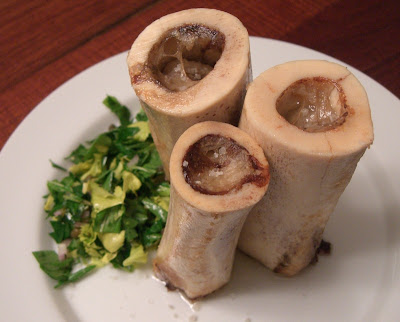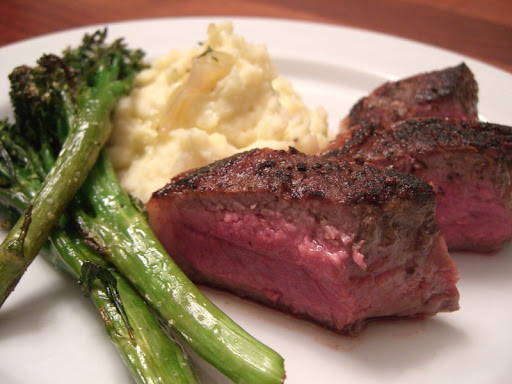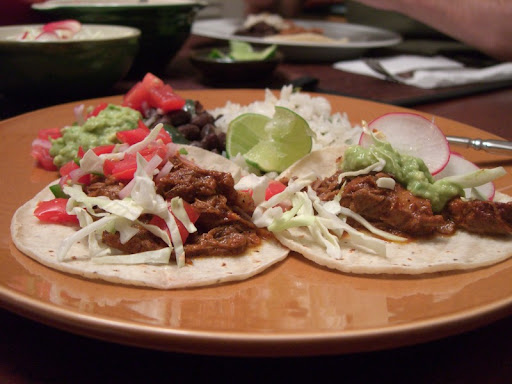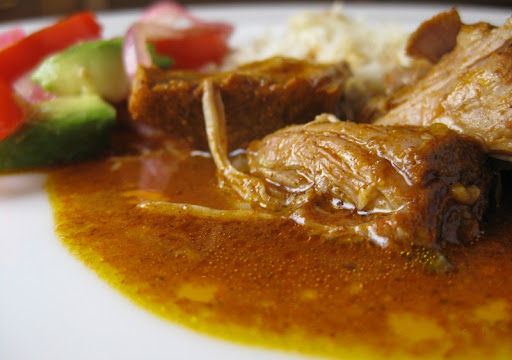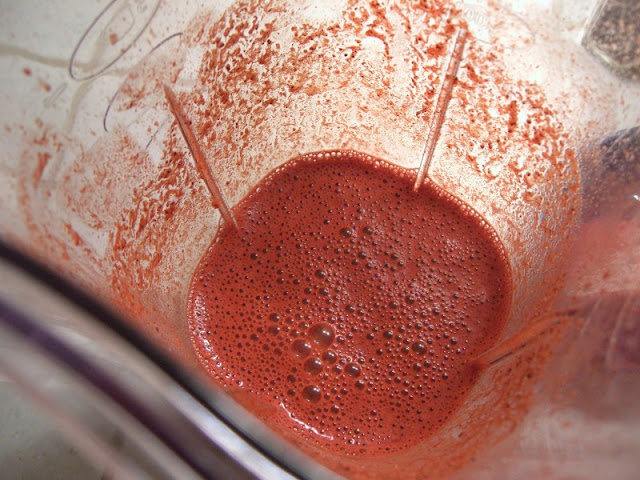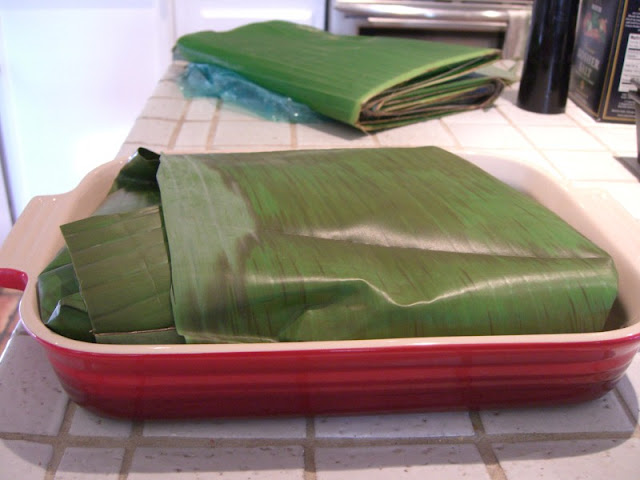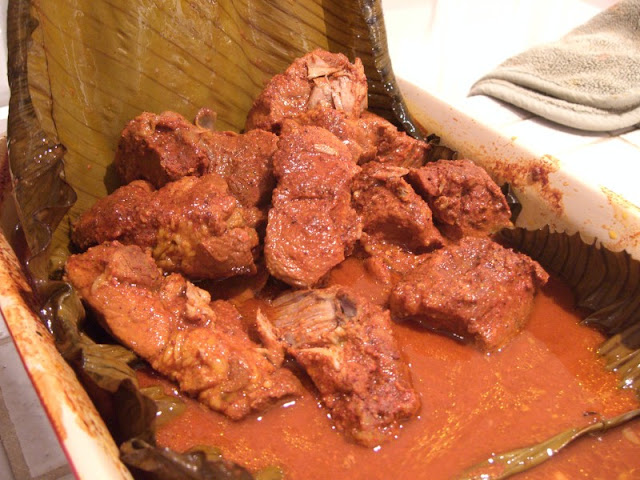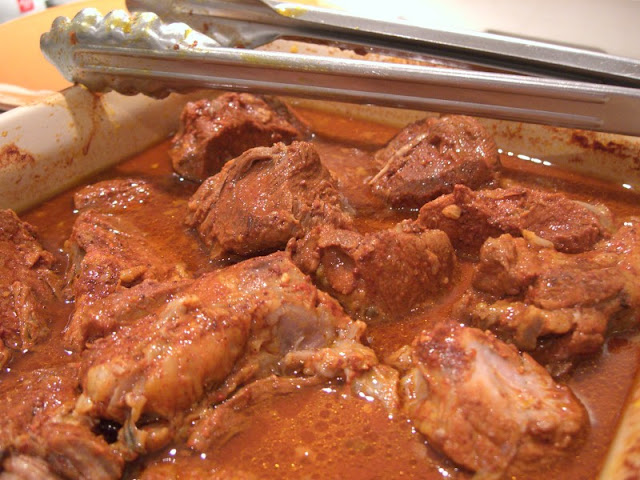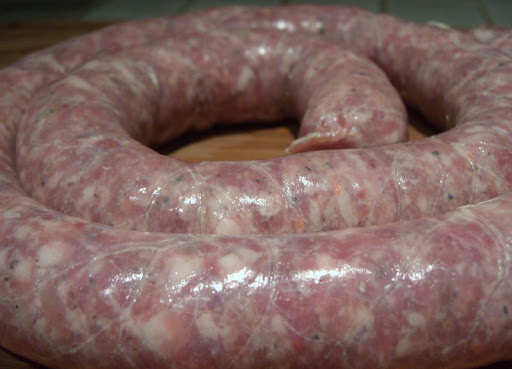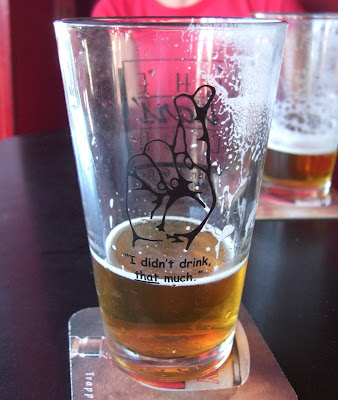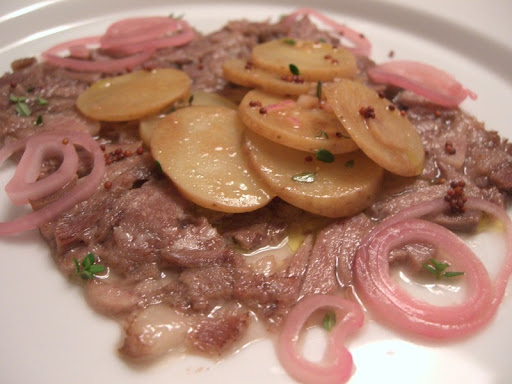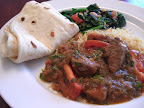The Feast of the Seven Fishes (La Vigilia)
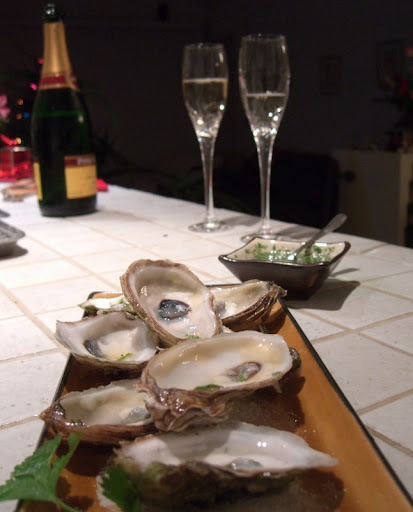
We've always had a tradition of seafood on Christmas Eve. It started with Sherry's family tradition of oyster stew. That evolved into more of a chowder which then became a multi-fish stew. Last year, when we learned of the Italian tradition of La Vigilia (the Feast of the Seven Fishes), we decided that it was right up our alley.
We are continuing the tradition this year, but it certainly isn't traditional Italian. No pasta (it takes up too much belly-room better saved for more fish) or Baccalà (for a poor-man's staple food, it is ridiculously expensive) .
We started with oysters on the half-shell, topped with a Thai mignonette. The mignonette had a fish sauce and lime juice base, with chopped basil, cilantro, mint and ginger.

Fish with Spicy Lentils is a dish we make often and each time we've had it, we've thought about making some sort of croquette with the leftovers. This was the perfect occasion. Rolled into little balls, crusted with panko and shallow-fried, we had them on a bed of celery greens.

Up next was sardine crostini with two kinds of sardines. The smaller ones are your basic store variety (product of Scotland) and the larger ones were Spanish and packed in a tomato base.

As a refresher before the final coarse, we had a "Yucatecan" squid salad. The squid was lightly blanched and then marinated in mixed citrus juice (orange, lime and lemon). It was garnished with Cara Cara orange and avocado.

And finally, we had a fish and shellfish stew. This year we used halibut, swordfish, Manila clams and Mexican white shrimp.

So, there you have it. Our Christmas Eve Feast of the "Seven" Fishes. It was actually five dishes and eight fishes, but who's counting...
Update: Check out our review of the Feast of the Seven Fishes comic strip book.


